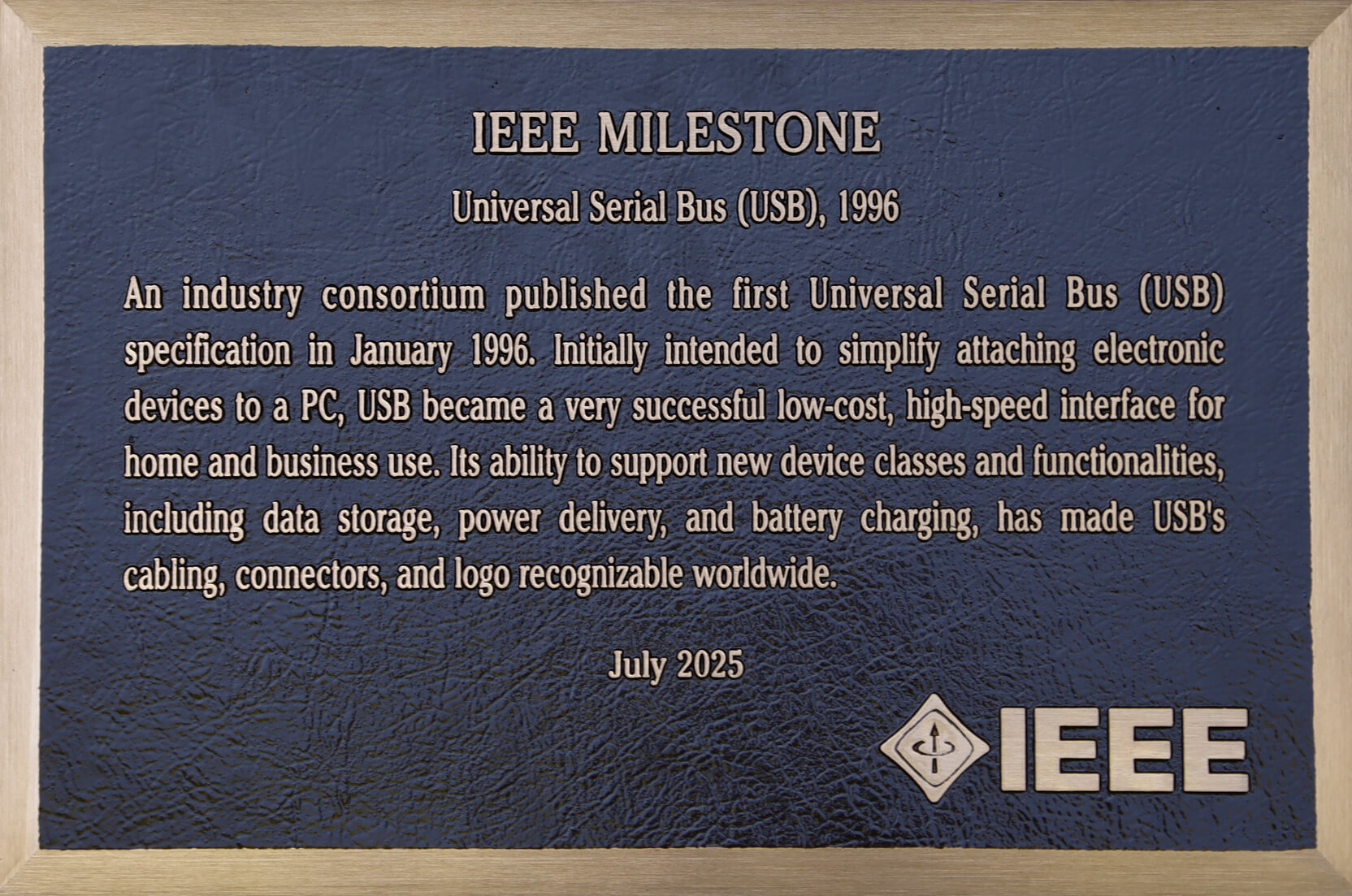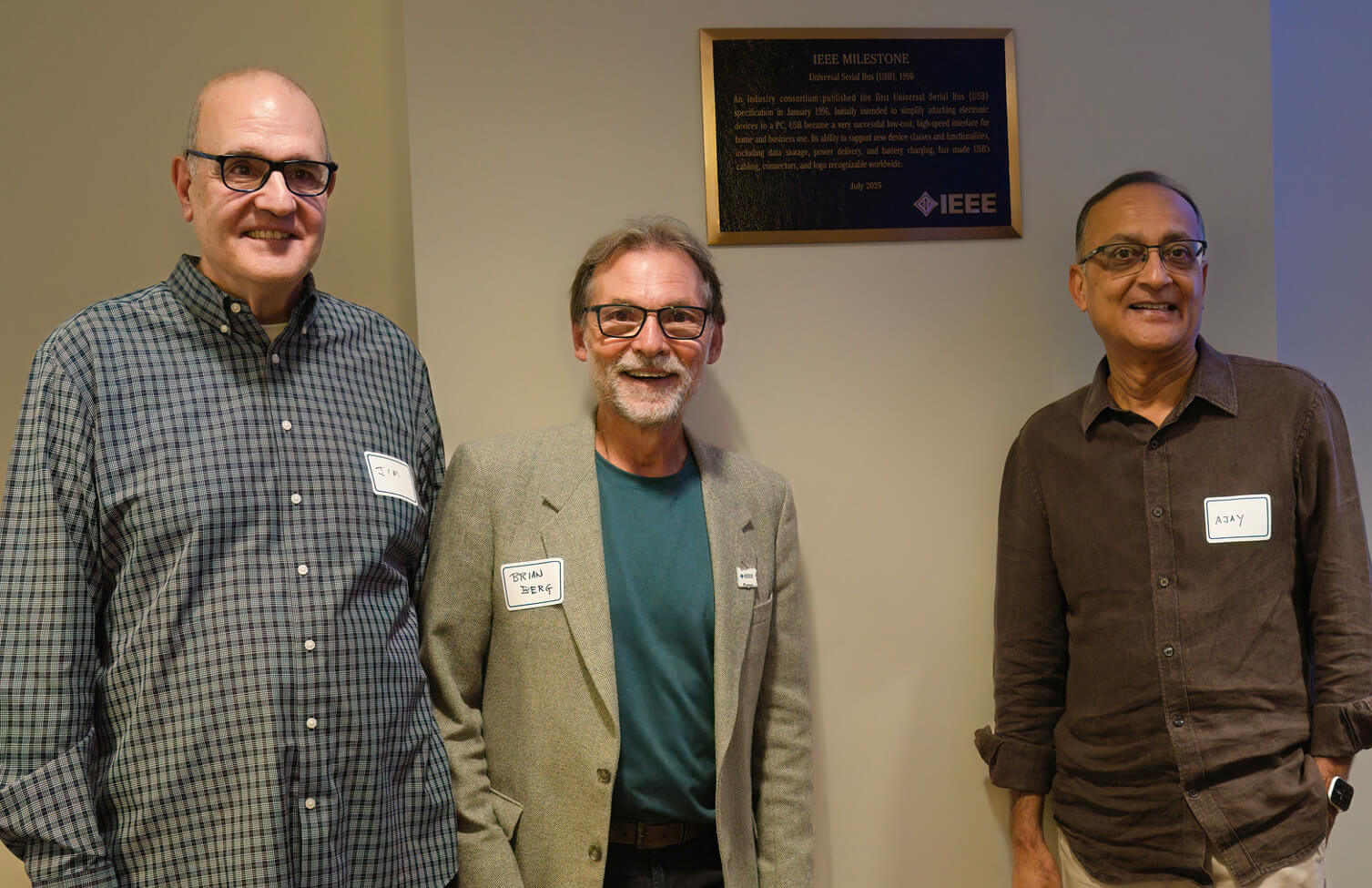Lifetime Achievement Award 2025
 2025 FMS Lifetime Achievement Award (LAA) recipient Jim Pappas (speaking) with Jim Handy, Tom Coughlin, Chuck Sobey, and Brian Berg. Tom Coughlin is FMS Conference Chair, and JIm Handy, Chuck, and Brian are LAA committee members.
2025 FMS Lifetime Achievement Award (LAA) recipient Jim Pappas (speaking) with Jim Handy, Tom Coughlin, Chuck Sobey, and Brian Berg. Tom Coughlin is FMS Conference Chair, and JIm Handy, Chuck, and Brian are LAA committee members.
Jim Pappas

Jim Pappas is the recipient of the 2025 FMS Lifetime Achievement Award for his leadership in establishing foundational industry standards and organizations which have underpinned the success of not only the memory and storage industries, but also for many other aspects of computing.
Creation of the PCI Standard

Jim worked for Digital Equipment Corp. (DEC) from 1981-1994. In 1991, he began a collaboration with Intel to create and drive a new standard. This led to creation of Peripheral Component Interconnect (PCI), a computer bus which defined motherboard slots that provided a standardized means for attaching hardware devices through plug-in cards. The PCI 1.0 spec was released in 1992 by the newly-formed PCI Special Interest Group (PCI-SIG). PCI was first implemented in IBM PC compatibles which then dominated the personal computer industry, and it displaced the slower ISA and VESA slots common at that time.

Because of its processor-independent design, robustness, and versatility, PCI was widely adopted across the industry. The PCI-SIG also hosted the industry's first major "plugfests" wherein engineers from a number of companies would work together to ensure that their components and devices were inter-compatible. This approach to development revolutionized the industry and led to cost savings, and also helped ensure that end-users could purchase products from multiple vendors with confidence. As a result, network cards, sound cards, modems, and other functionalities could easily and inexpensively be purchased to customize a user's computer.
USB and "Plug and Play"

PCI's success led to Jim's recruitment by Intel in 1994, where he led an effort to improve upon the success of PCI. While PCI's goals included a "plug and play" end user experience for upgrading a computer, too often this ended up being a "plug and pray" nightmare because of headaches and problems getting software drivers to be loaded and to operate correctly. To deal with this, Jim assembled an industry team that consisted of Compaq, Digital Equipment Corporation (DEC), the IBM PC Co., Intel, Microsoft, NEC, and Northern Telecom (Nortel) whose goal was to make it easier to attach devices to a computer.

This team led the effort to create the Universal Serial Bus (USB), and in 1995 they together founded the USB Implementers Forum (USB-IF). The "plugfests" that originated with PCI were essential for the success of this new standard as well. The USB 1.0 spec was released in 1996, and it became the most ubiquitous I/O technology ever. USB is widely used to this day, and its connectors are recognized by billions of people worldwide. With this success, Jim became known as "Mr. USB."
Continued Industry Efforts


Servers and Data Centers



In 2007, Jim became a Board Member of The Green Grid upon its founding. This was a nonprofit, industry consortium of end-users, policymakers, technology providers, facility architects, and utility companies that collaborated to improve the resource efficiency of data centers. In 2012, Jim joined the SNIA Board of Directors to start the Persistent Memory Technology Initiative. The first Persistent Memory Summit was held that year, and this effort proved to be fundamental in driving the convergence of Storage and Memory.

In 2010-2011, Jim and his team helped to drive the industry acceptance of NVMe by enabling the SSD companies with engineering support, plugfest events, and creation of NVMe showcase communities at technical conferences and trade shows.
The Age of AI, and the Need for Compute/Memory/Storage Integration



Jim's Work with Amber Huffman
For many of these efforts, Jim often worked cooperatively with fellow Intel employee and FMS 2023 Lifetime Achievement Award winner Amber Huffman. They were both deeply involved with promoting industry initiatives, and they often mentored each other in the process.
Jim is Recognized at USB IEEE Milestone Dedication

On July 30, 2025 (6 days prior to FMS), an IEEE Milestone for USB was dedicated at Intel's Jones Farm campus in Hillsboro, Oregon, where Jim had worked. At this event, Jim spoke about how companies from around the world came to the site and worked collaboratively in testing early USB hardware and software. He described how these efforts led to USB's replacement of multiple other interfaces starting in the late 1990s, and how USB has become the most popular and most recognizable computer interface in the world.



